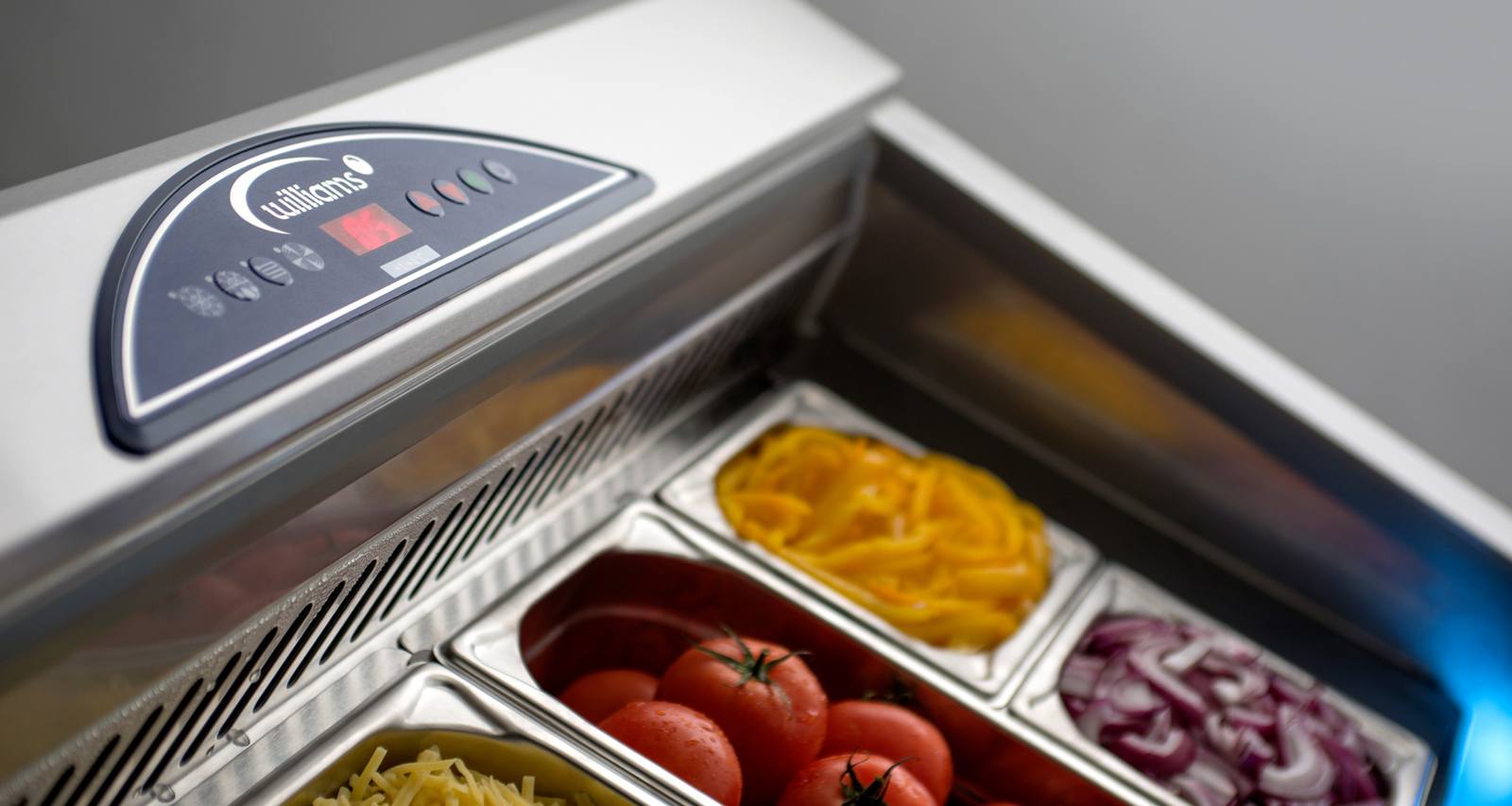Ingredient prep stations are increasingly popular in kitchens, cafes, takeaways and sandwich bars. The big appeal is that they store ingredients on the worktop right where they are needed by chefs and staff. Typically a prep station will feature ingredients wells mounted on top of refrigerated counters. The ingredients wells will be designed to hold gastronorm sized pans – typically 1/3GN or 1/6GN.
Preparation Stations: Key Energy Efficiency Considerations
Food safety – the vital issue. There’s no point in buying a model that uses less energy but can’t keep the ingredients at the right temperature. So ask the supplier to confirm performance levels.
Keep the lid on: putting a lid on the pans when the ingredients are not required will cut energy use.
The four hour rule: most prep stations refrigerate the ingredients wells from below. Using the counter’s refrigeration system, cold air is blown around the pans. While it uses less energy than the curtain of air method (see below), this design will not continuously hold the product below 8°C. After four hours the ingredients need to be placed back into the refrigerator to be chilled and rotated. This process can only be carried out once, after which ingredients must be thrown away if they haven’t been used.
Curtain of air: some prep stations use an air curtain to keep ingredients chilled. The ingredients wells are mounted on the slant at the rear of the countertop. The curtain of (cold) air cascades across the surface of the wells, keeping ingredients at the correct temperature while allowing easy access by staff. As it drops past the wells, the cold air is recycled within the system. Night covers will cut energy use. With these models, there is no need to put the pans in the refrigerator after four hours, since they continuously hold ingredients at or below 8°C. This reduces food wastage, enhances food safety and cuts out staff time involved in monitoring, handling and replacing ingredients.
Insulation: For models using raised ingredients, check that ‘walls’ around the wells are insulated. Insulated lids and tops will also save energy.
Mind the gaps: gaps between ingredients pans will waste energy. Make sure the pans fit the wells, with no gaps – ideally the unit should be supplied with spacer bars that close any gaps and avoid leakage.
Hydrocarbon refrigerants: some prep stations will run on hydrocarbon refrigerant, which is both energy saving and environment-friendly. However, check that the refrigerant charge is below the 150gm threshold, or there could be health and safety issues to consider.
Drawers or doors: the refrigerated cabinets that the ingredients pans are mounted on will either have doors or drawers. Drawers are the more energy efficient option – because less cold air escapes when you open a drawer – and a bank of three drawers is more energy efficient than two. Drawers also give chefs easier access to the interior.
Other standard energy efficient features to look for include smart controllers, which monitor usage and reduce energy consumption in quiet periods such as overnight; self-closing doors; and high performance insulation. On a day to day basis, save energy by ensuring that doors and drawers are kept shut; wherever possible, position cabinets away from heat sources; ensure equipment is serviced regularly to maintain efficient operation; check door gaskets (seals) and replace any that are split.
